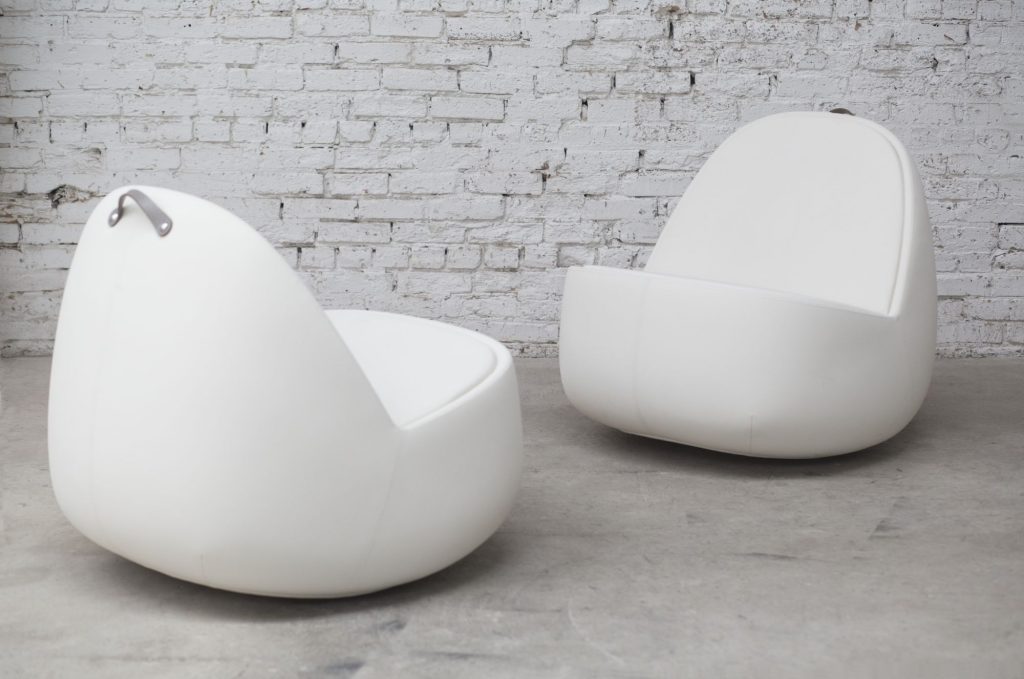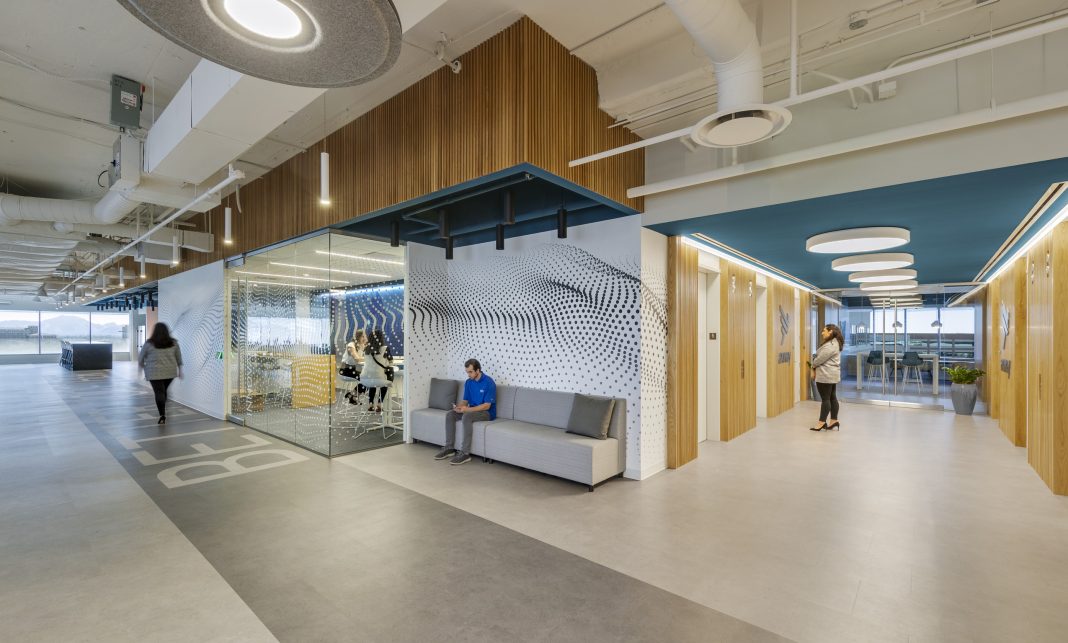The resilient workplace creates an ecosystem designed for all. Ryan Boe of SmithGroup discusses how this design choice builds in variety for all and proves to be beneficial for neurodiverse individuals in the workforce.
Resilient Workplaces: Introduction
Physical, mental, and emotional well-being are essential to employee satisfaction related to their work environment and engagement. To support the overall well-being and health of their employees, organizations must create workplace environments that are resilient in evolving to meet the needs of their employees over time. A “Resilient Workplace is an ecosystem of different work environments designed to evolve and adapt to employees’ needs over time.”1
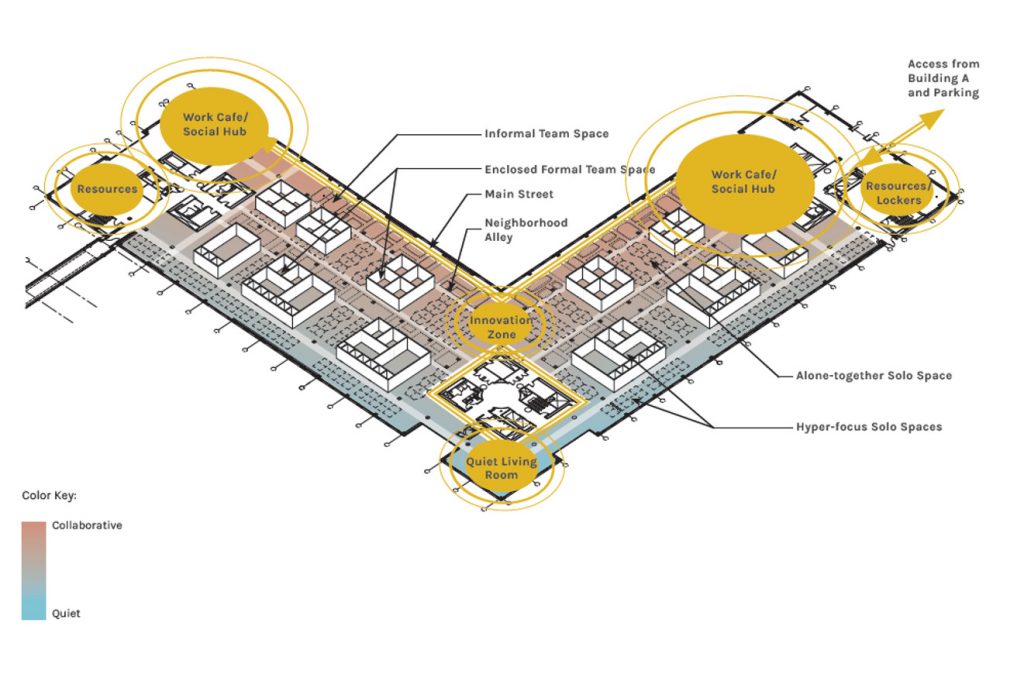
Designers create resilient workplaces by utilizing flexibility of choice through an ecosystem of spaces that can adjust and adapt to support the holistic well-being of both the individual and communal needs. Designing spaces that encourage multiple physical work settings creates support for movement, encourages healthy posture, and comfortability. Designers should create a variety of options for people to work in sitting, standing, lounging postures to support engagement and focus.1
Designing workplaces that are inclusive to all supports a more diverse workforce—resulting in an amplification of employee engagement, employee satisfaction, higher quality work, and a boost in employee productivity.
Adaptive Inclusive Diverse Environments Ecosystem
No one singular space can support all the diverse needs of its individual and group users. The workplace must instead be an ecosystem of adaptive environments that are inclusive and supportive to the diverse needs of all. According to a Steelcase Global Report, a “workplace ecosystem supports employees well-being by providing individuals and groups a range of spatial options within the workplace to focus, collaborate, rejuvenate, socialize, and engage throughout their day. A workplace ecosystem also supports employee well-being by creating interconnected environments with a range of options of choice and controllability.” 1
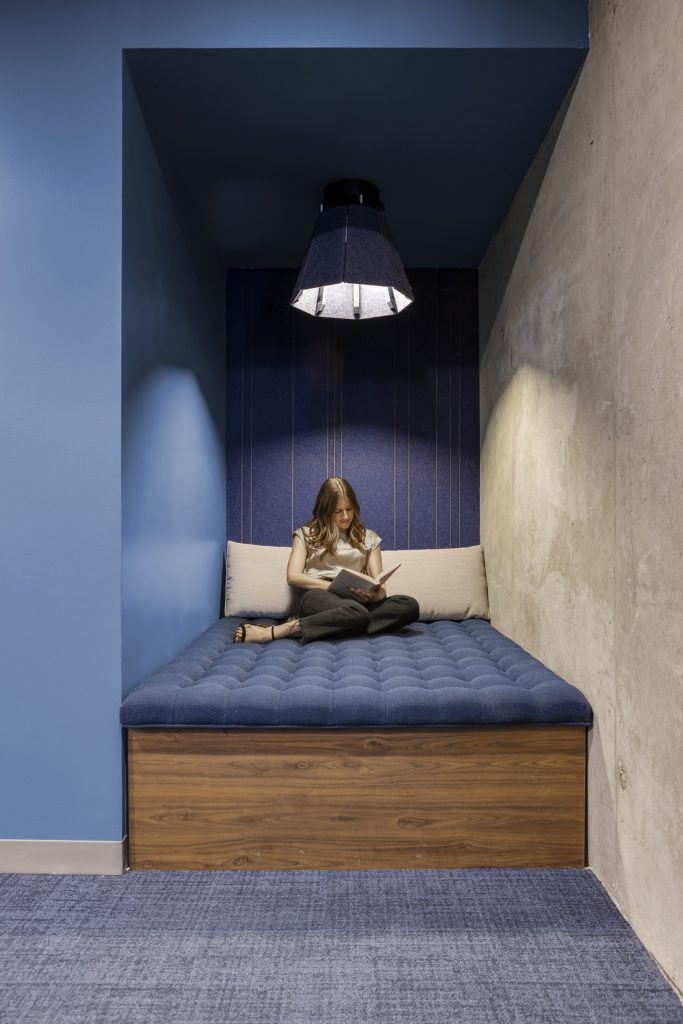
Spatial Planning and Wayfinding
A resilient workplace that creates an optimistic workforce is an ecosystem of spaces that are supportive to individual and communal needs. Spatial planning, by way of grouping related activities together, creates functional and spatially organized areas within the overall ecosystem of interconnected spaces. It is important to design spaces with consistent layouts that incorporate well-defined activity zones that naturally flow between zone to zone using transition spaces to optimize layout and organization. Designers must also ensure that spatial planning layouts incorporate clear pathways to transition from space to space to accommodates individuals with physical or invisible disabilities that affect coordination, balance, fine motor coordination, cognitive, or mobility needs.
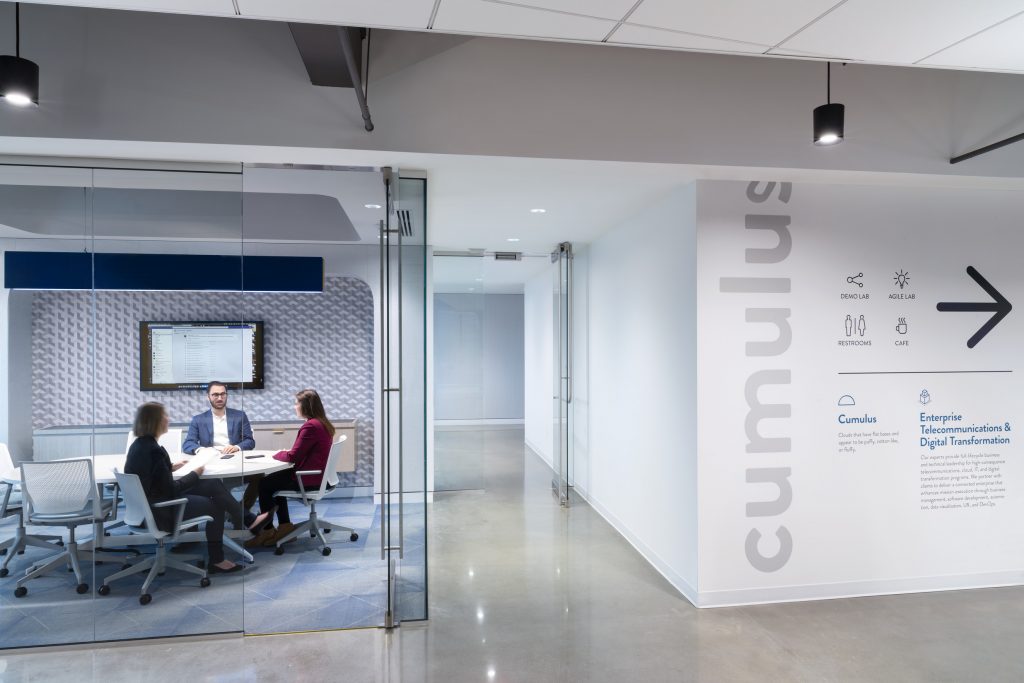
Visual cues and wayfinding using graphic visuals instead of word associations assists neurodivergent individuals in providing a meaningful method to navigate space. For example, neurodivergent individuals with dyslexia or autism struggle to connect word associations with directions as their neurological wiring disassociates either the meaning to the word or the lettering order. The use of a standardized graphic system associated with large hyper-graphics allows memory connection to occur that associates the graphic image or object to its spatial location.
Through the combined use of an ecosystem of interconnected spaces, optimization of layout, clear pathways, spatial arrangement, and wayfinding strategies creates and promotes an effortless navigation system that is inclusive for all.
The Psychology & Neuroscience of Color
Our perception of color is rooted in the intricate process our eyes receive light waves that our brains interpret into the colors we perceive. Neurodiverse individuals often experience color perception in greater intensity as the neurodivergent brain processes 20% more sensory stimuli at any given moment. Some neurodivergent individuals may perceive certain colors as overwhelmingly bright, while others may exhibit higher sensitivity to slight or subtle color variations.2
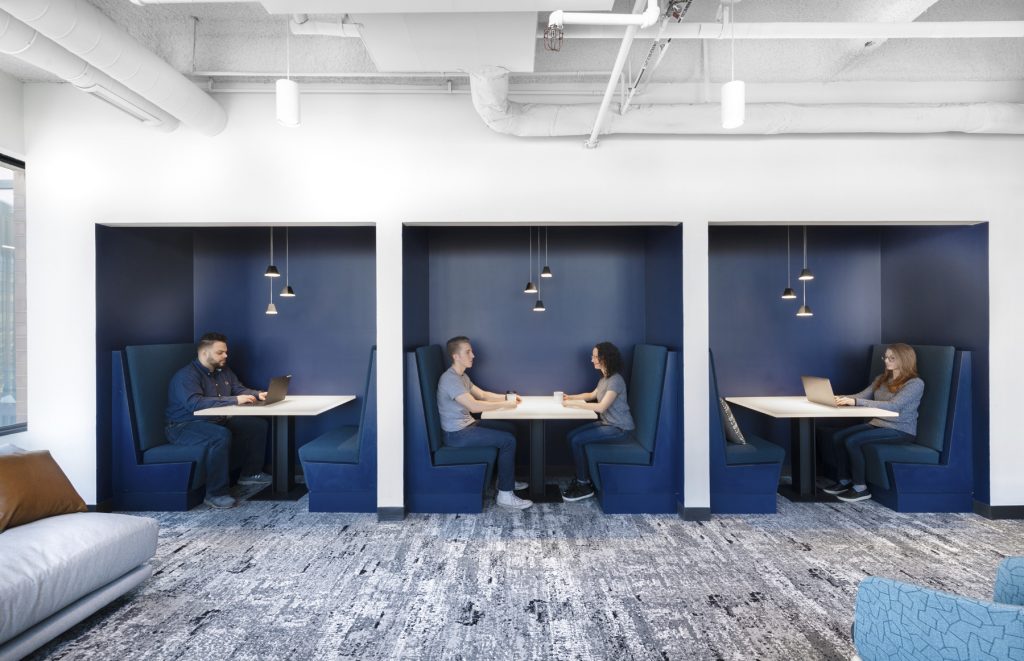
The use of colors in our built environments significantly impact psychological and physical responses with potentially amplifying harmful effects. According to Dr. Maria Xirou—author, medical doctor, and expert in the field of neuroscience—designers should implement the following color selection strategies to increase focus and reduce overstimulation particularly for sensory overload or hypersensitivity.
“[Designers should] opt for soft muted colors like pastels, soft blues, light greens, and nature-inspired hues to create a calming environment and reduce sensory overload. [Designers should] limit the use of bright and intense colors, as they can be overstimulating … Using light grays, light browns, earth tones and dark blue in an office area helps concentration. Darker and dull orange hues increase concentration, as well as black in small quantities,” she said.
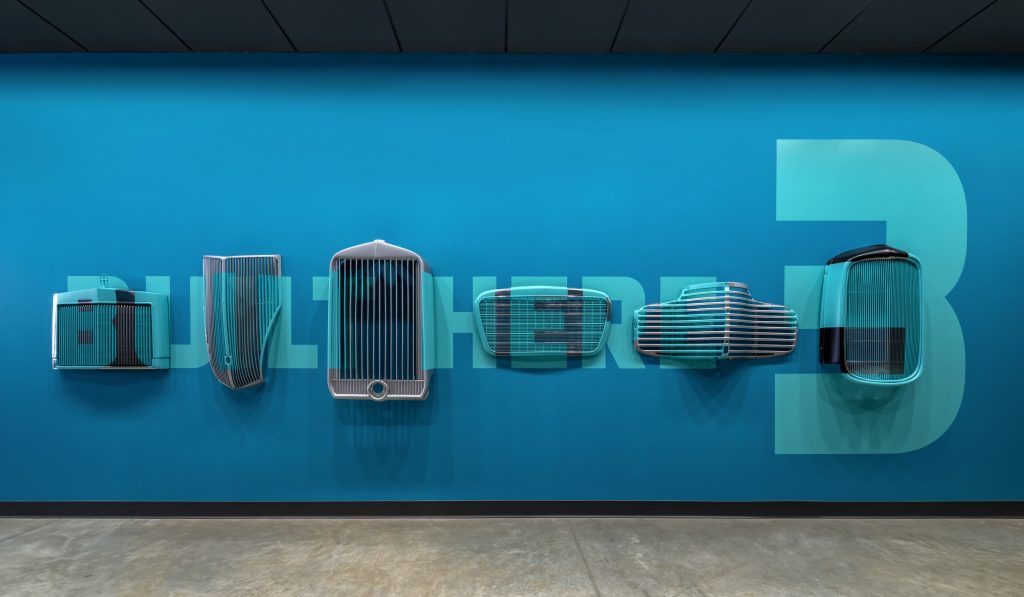
Xirou also warned against certain shades and uses of color. “Be cautious with red, as it can be overwhelming and hinder relaxation. Lighter shades of red, like light pink, can create a calming effect. Small quantities of yellow, red, and orange can create a cheering atmosphere, but if yellow or orange is in copious quantities this can worsen low mood and create anxiety. Use purple very carefully as it is a risk of mood deterioration,” she said.
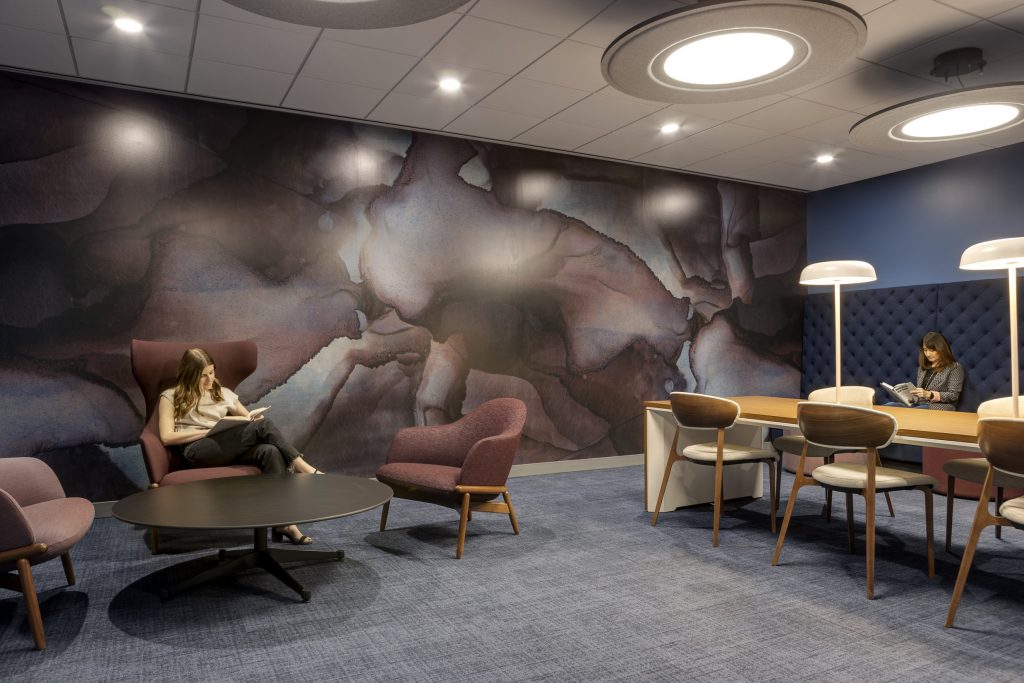
“Light pink hues can create a jolly and pleasant environment for individuals who suffer with low mood. Light blue creates a calming environment, but incorporating small quantities of colorful accessories or furnishings, such as vibrant cushions, can uplift mood.”2
Conclusion
Designers must avoid a one-size-fits all approach. Resilient workplaces must be an ecosystem of environments that provide the flexibility and choice of the individual to gravitate to the environment that best suits their individual needs.
Resilient workplaces must be adaptable and inclusive to allow individuals to adjust based on their comfort levels and sensory sensitivities.
Designers and workplace leaders should collaborate with employees to develop individual and collective strategies for a resilient workplace. Designers and workplace leaders must understand that physical, mental, and emotional health directly affects overall employee satisfaction and quality of life. By embracing collaboration that promotes everyone’s well-being and supports their unique needs, we create a future where inclusive design for all is customary practice.
All images courtesy of SmithGroup
References
- Steelcase. Insights & Solutions. The Resilient Workplace: Designing for Engagement. 2016. Steelcase – Online Publication. Link to article.
- Xirou, Maria, Dr. Interior Designing for the Neurodiverse – A Transformation Guide. Hasmark Publishing International. 2024, First Edition.
Want more expert insights from Ryan Boe? Check out:
Designing Workspaces For All
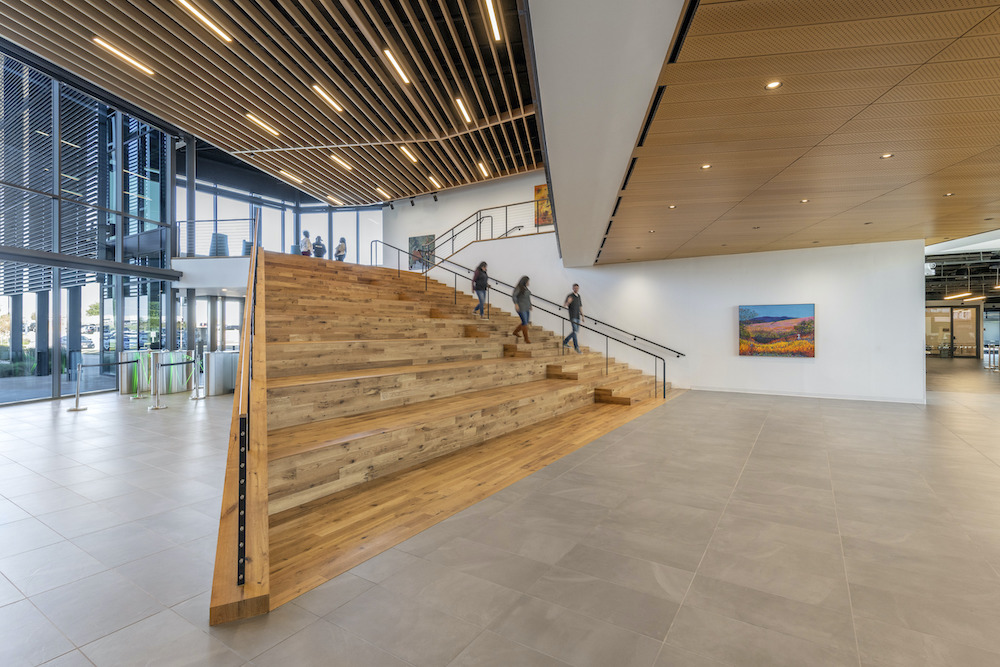
Looking for products to fill inclusive environments? Check out our latest roundup:
Fidget to Focus: Unlocking Workplace Potential with Inclusive Furniture
